#King John I by Leopoldo de Almeida
Text
















Portuguese Crisis of 1383–85
Battle of Aljubarrota: Portuguese forces commanded by John I of Portugal defeated the Castilian army of John I of Castile on August 14, 1385.
#King John I by Leopoldo de Almeida#São Jorge Castle#Lisbon#Lisboa#travel#Portugal#João I de Portugal#Praca da Figueira#Albufeira#Algarve#Atlantic Ocean#beach#Portuguese Crisis of 1383–85#Battle of Aljubarrota#John I of Portugal#won#14 August 1385#anniversary#Portuguese history#Ourique#original photography#summer 2021#architecture#Southern Europe#cityscape#landscape#seascape#vacation#tourist attraction#landmark
9 notes
·
View notes
Link
In Belém, rose the Monument to the Discoveries in concrete coated rosal stone Leiria, during the celebrations of the 5th centenary of the death of Infante D. Henrique. The monument was inaugurated on August 9, 1960.
The original building of the Discoveries that Cottinelli Telmo smiled and Leitão de Barros and Leopoldo de Almeida gave mental and plastic form, was erected in 1940 during the Portuguese World Exhibition. Originally consisted in its architectural part by a slight iron and cement structure, being in the gypsum sculptural composition consists of 33 figures, with the maximum figure the Infante D. Henrique.
- Commemorative Monument and evocative of Epic of the Portuguese Maritime Discoveries.
It is an ex-libris of Lisbon. It was a provisional draft of the architects Cottinelli Telmo (1897-1948) to which Leopoldo de Almeida (1898-1975) and Barros Leitão formed in iron and plaster. Commissioned by the Salazar regime for the Portuguese World Exhibition 1940, it was dismantled this template and made this replica concrete coated limestone rock in 1960, the year of commemoration of the 500th anniversary of the death of Infante D. Henrique.
Located on the edge of the river and even leaning on this, has 52 m of height and elevator that leads us to the 6th floor and then a climb stairs to the terrace where you can enjoy a fantastic panoramic view of the Tagus, the other "band "and the Empire Square / Jeronimos.
In the basement or lower floor has a temporary exhibition and conference room.
The monument is shaped like the prow of a stylized caravel c / o shield of Portugal and the sword of the Avis Royal House carved over the entrance.
He has sculpted 33 figures of our heroes linked to the discoveries, and the central figure of Infante D. Henrique (The Navigator - son of John I and booster maritime adventure of the people), which, with 9 m high, is at bow with a caravel in the hands. In two side ramps are 32 other figures of heroes and Portuguese navigators linked to the discoveries of secs. XV and XVI.
To highlight the figures of the poet Luis de Camões with a copy of the Lusíadas and painter Nuno Gonçalves with a palette.
On the pavement of the access yard, front of the building, is designed a Rose-of-Winds in marble and limestone IOLs, white, red and black, with 50 m ø, which was a gift from the Republic of South Africa. It has a planisphere of 14 m and a central map with ships, caravels, galleons and mermaids and tracing the routes of discovery and Portuguese expansion. The design is the architect. Cristino da Silva (1896-1976).
The 33 figures are:
West - On the left side (viewed from the front and rear-facing / bow)
Prince Pedro, Duke of Coimbra (son of King John I of Portugal); Dona Filipa of Lancaster (Queen, Mother of Infants, of John I woman); Mendes Pinto (writer and adventurer East); Frei Gonçalo de Carvalho (Dominican); Frei Henrique de Coimbra (Franciscan); Luiz Vaz de Camões (epic poet, the largest in Portugal); Nuno Gonçalves (painter); Gomes Eanes de Zurara (columnist); Covilhan (viageiro); Jácome de Mallorca (cosmógrafo); Pero Escobar (browser / pilot); Pedro Nunes (mathematical); Pero Alenquer (browser / pilot); Gil Eanes (browser); João Gonçalves Zarco (browser); Prince Fernando, (the Holy Infant, son of King John I of Portugal).
The center and the bow Infante D. Henrique.
East - the right side (facing the front and front / back bow)
Afonso V of Portugal (King); Vasco da Gama (browser / discoverer of the sea route to India); Afonso Baldaia (browser); Pedro Alvares Cabral (browser / discoverer of Brazil); Ferdinand Magellan (browser / Circum-navigation Travel); Nicolau Coelho (browser); Gaspar Corte-Real (browser / Labrador Peninsula); Martim Afonso de Sousa (browser); Barros (Cronista / Historian); Stephen da Gama (captain); Bartolomeu Dias (browser / discoverer of the Cape of Good Hope); Diogo Cao (browser); António de Abreu (browser); Albuquerque (Viceroy of India / governor); St. Francis Xavier (missionary / evangelist); Cristóvão da Gama (captain).
For more information please contact:
Mobile Phone - 00 351 918 206 330
Email - [email protected]
0 notes
Photo

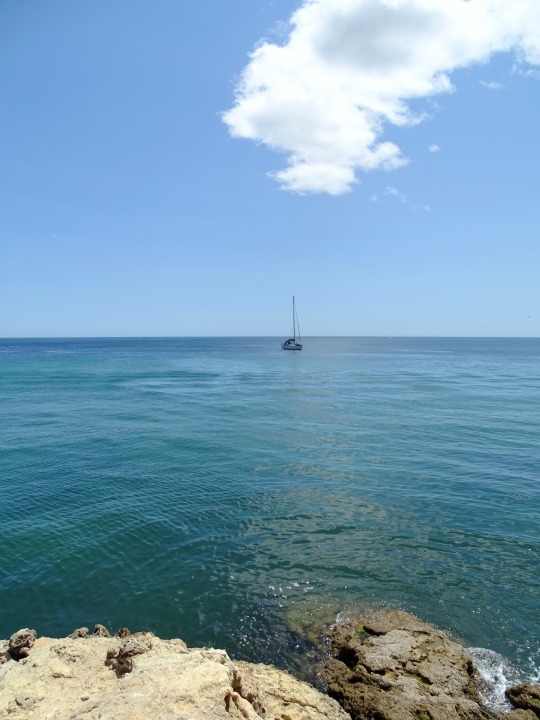

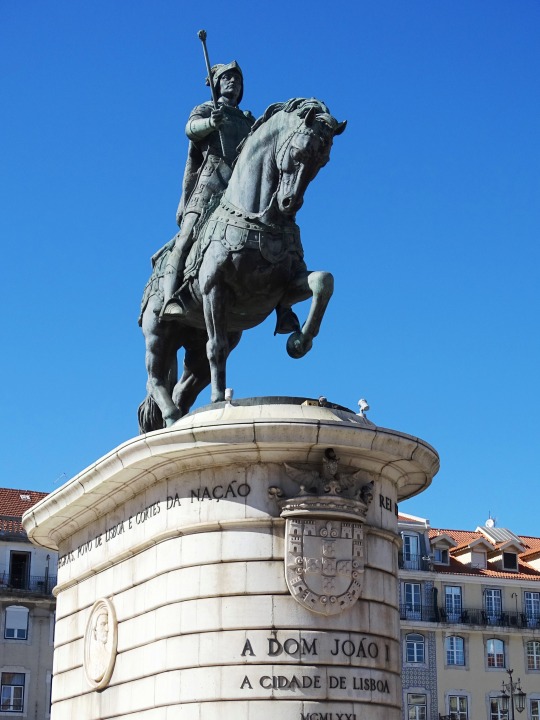



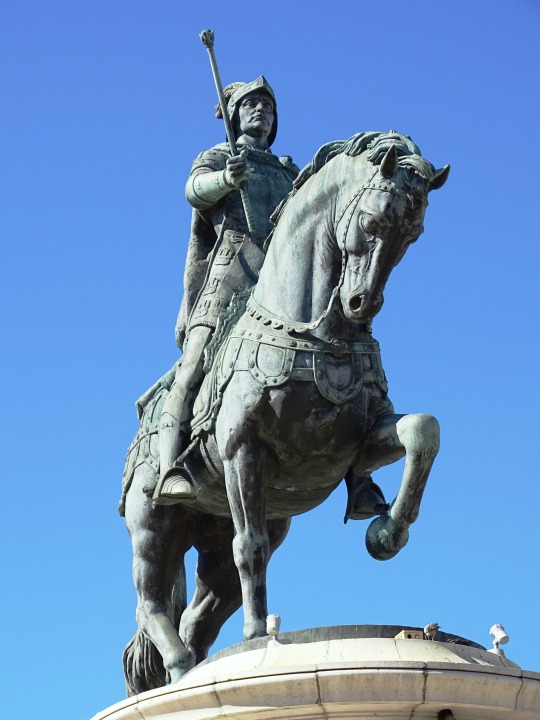


Portuguese Crisis of 1383–85
Battle of Aljubarrota: Portuguese forces commanded by John I of Portugal defeated the Castilian army of John I of Castile on August 14, 1385.
#King John I by Leopoldo de Almeida#São Jorge Castle#Lisbon#Lisboa#travel#Portugal#João I de Portugal#Praca da Figueira#Albufeira#Algarve#Atlantic Ocean#beach#Portuguese Crisis of 1383–85#Battle of Aljubarrota#John I of Portugal#won#14 August 1385#anniversary#Portugese history#Ourique#original photography#summer 2021#architecture#Southern Europe#cityscape#landscape#seascape
3 notes
·
View notes
Photo
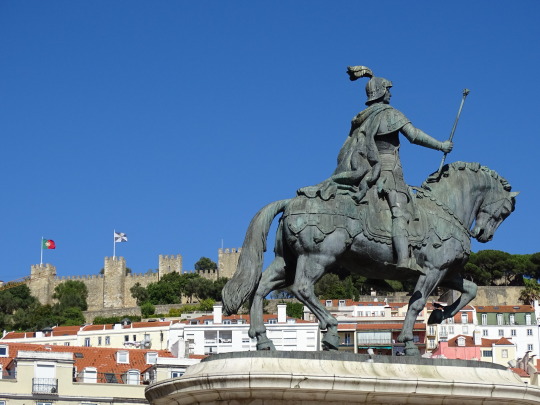

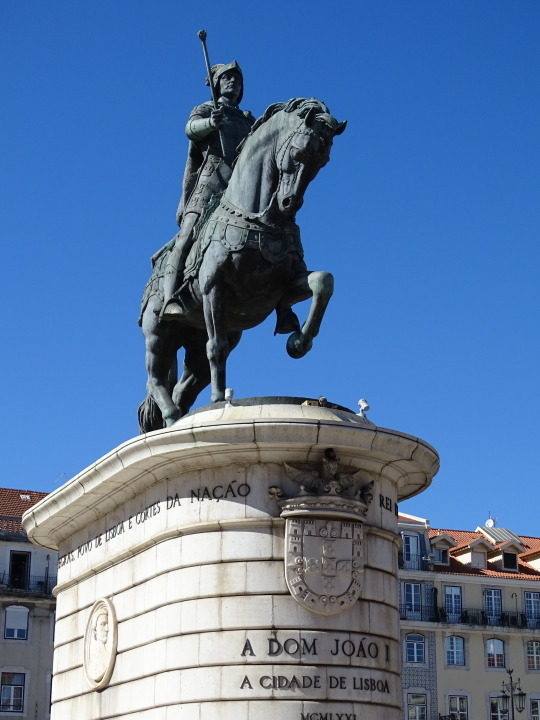





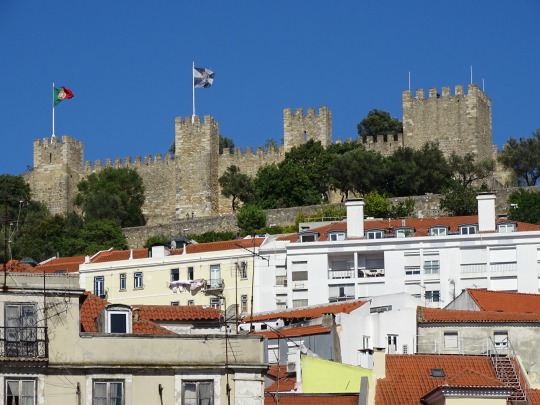
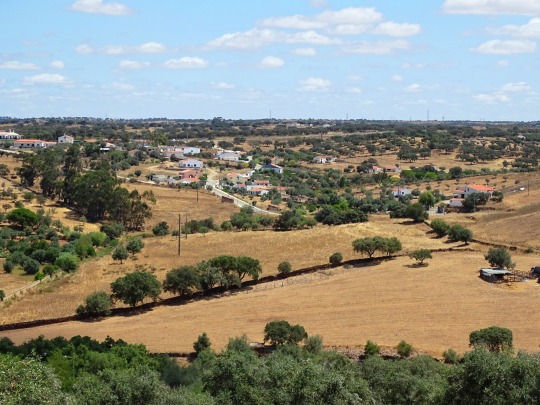
Portuguese Crisis of 1383–85: Battle of Aljubarrota: Portuguese forces commanded by John I of Portugal defeated the Castilian army of John I of Castile on August 14, 1385.
#King John I by Leopoldo de Almeida#John of Aviz#João I de Portugal#travel#Praca da Figueira#Lisbon#Lisboa#São Jorge Castle#Portugal#vacation#Portuguese Crisis of 1383–85#Battle of Aljubarrota#14 August 1385#anniversary#sculpture#public art#tourist attraction#landmark#original photography#architecture#cityscape#summer 2021#Atlantic Ocean#beach#Ourique#landscape#countryside
3 notes
·
View notes
Photo





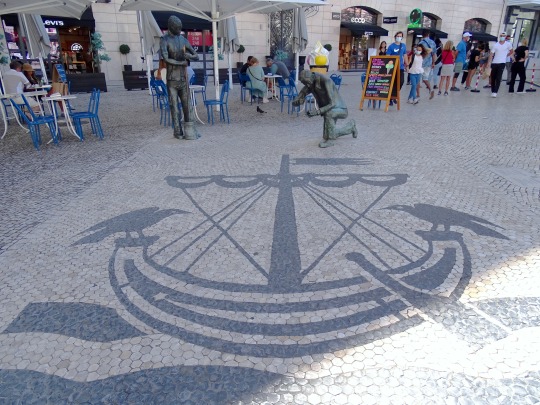

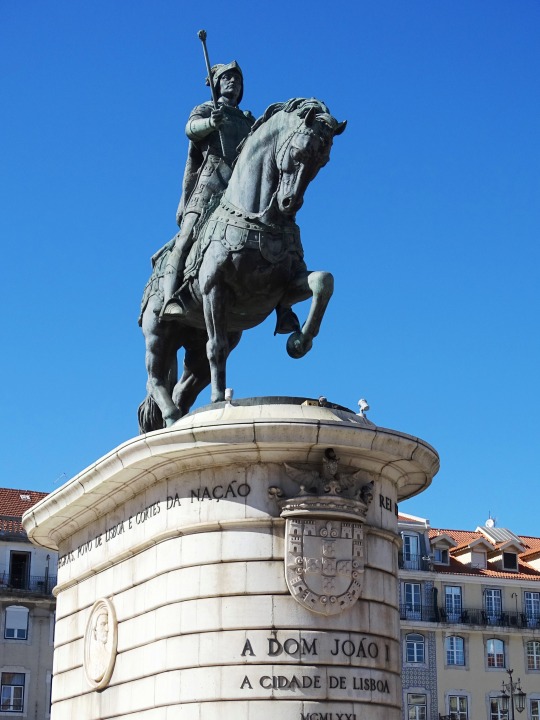


Public Art, Lisbon (No. 6)
The Baixa (Downtown), also known as the Baixa Pombalina (Pombaline Downtown) is a neighborhood in the historic center of Lisbon, Portugal. It consists of the grid of streets north of the Praça do Comércio, roughly between the Cais do Sodré and the Alfama district beneath the Lisbon Castle, and extends northwards towards the Rossio and Figueira squares and the Avenida da Liberdade (Lisbon), a tree-lined boulevard noted for its tailoring shops and cafes.
The Pombaline Baixa is an elegant district, primarily constructed after the 1755 Lisbon earthquake. It takes its name from Sebastião José de Carvalho e Melo, 1st Marquis of Pombal, the prime minister to Joseph I of Portugal from 1750 to 1777 and key figure of the Enlightenment in Portugal, who took the lead in ordering the rebuilding of Lisbon after the 1755 earthquake. The Marquis of Pombal imposed strict conditions on rebuilding the city, and the current grid pattern strongly differs from the organic streetplan that characterised the district before the earthquake.
Source: Wikipedia
#Monument to the Calceteiro by Sérgio Stichini#Restauradores Square#Lisboa#Lisbon#King John I by Leopoldo de Almeida#Praca da Figueira#São Jorge Castle#mosaic#architecture#public art#sculpture#cityscape#evening light#façade#tourist attraction#landmark#Portugal#vacation#travel#summer 2021#Southern Europe#downtown#original photography
4 notes
·
View notes
Photo

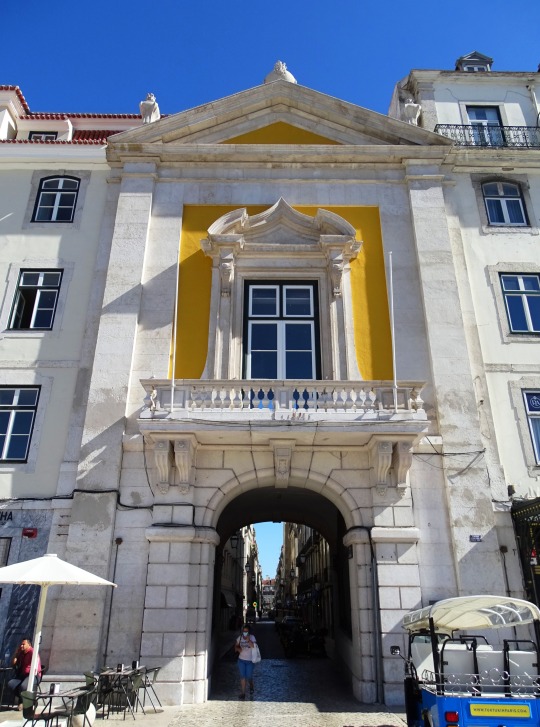
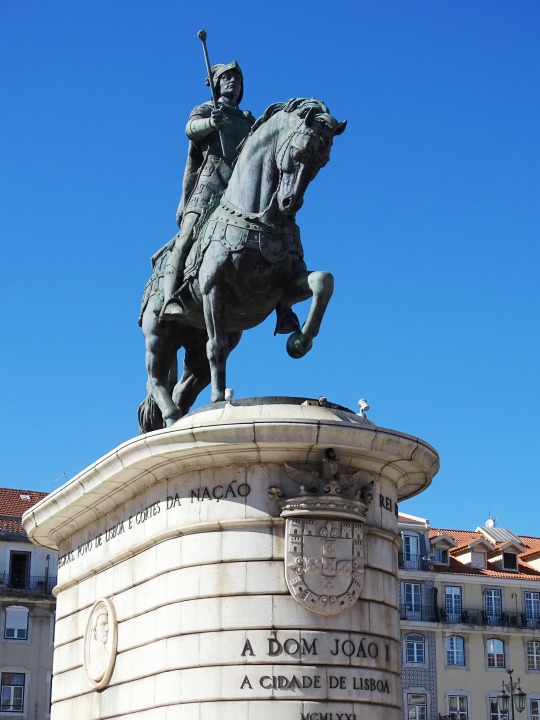
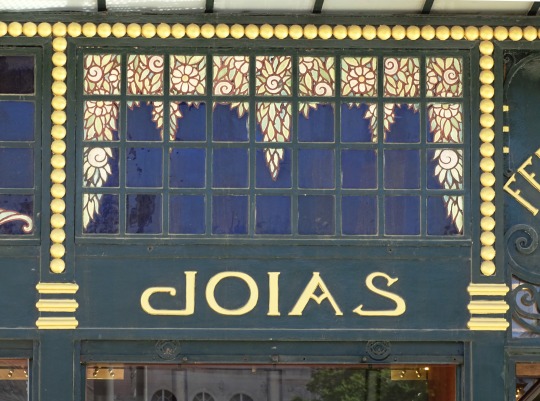





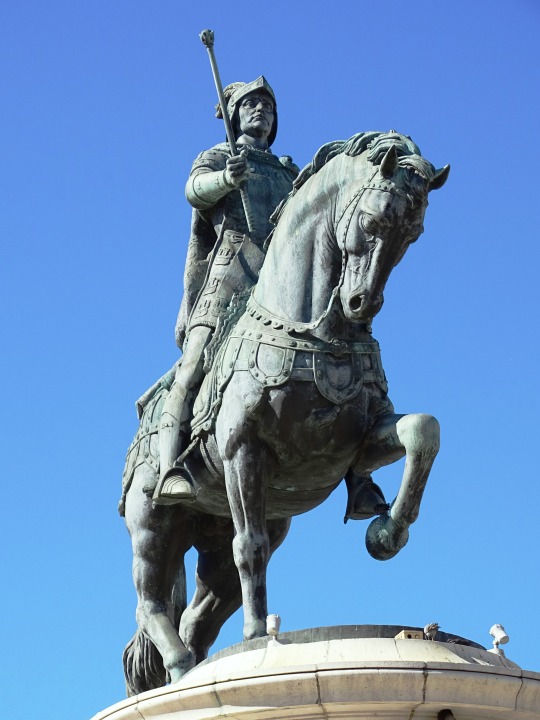
Rossio/Praca da Figueira, Lisbon (No. 5)
The Rossio has been a meeting place for people of Lisbon for centuries. Some of the cafés and shops of the square date from the 18th century, like the Café Nicola, where poet Manuel Maria Barbosa du Bocage used to meet friends. Other traditional shops include the Pastelaria Suíça (1922–2018) and the Ginjinha, where the typical Lisbon spirit (Ginjinha) can be tasted. The building of the Maria II Theatre and the Public Gardens to the north of the square only made the area more attended by Lisbon high society in the 19th century. Nowadays it is constantly populated by Lisboners and tourists.
Source: Wikipedia
The Praça da Figueira (Square of the Fig Tree) is a large square in the centre of Lisbon, in Portugal. It is part of the Lisbon Baixa, the area of the city reurbanised after the 1755 Lisbon earthquake.
In the 16th century the square did not exist, and most of its area was occupied by the Hospital Real de Todos os Santos (All-Saints Royal Hospital), the most important in the city. In 1755, after the great earthquake which destroyed most of Lisbon, the hospital was greatly damaged. It was demolished around 1775.
The large area previously occupied by the hospital in the Baixa was turned into an open market square. Around 1885, a large covered market of 8,000 m² was built. This market existed until 1949, when it was demolished. Since then the square has been an open space.
In 1971 a bronze equestrian statue representing King John I (1357–1433), by sculptor Leopoldo de Almeida, was inaugurated in the square. The monument also carries medallions with the effigies of Nuno Álvares Pereira and João das Regras, two key characters in the 1385 Revolution that brought John I to power.
In 1999/2000, during the last renovation of the square, the statue was relocated from the middle to a corner of the square, in order to make it visible from the Praça do Comércio. The original renovation project also called for the buildings to be completely covered with ceramic tiles (azulejos) by Daciano Costa, which has not been done.
The Praça da Figueira has a very uniform profile, with four-storey buildings dating from the rebuilding of the Baixa Pombalina. The buildings are occupied by hotels, cafés, and several shops. It is also an important traffic hub, with bus and metro stops.
Source: Wikipedia
#Arco do Bandeira by Manuel Reinaldo dos Santos#Praca da Figueira#travel#King Pedro IV Square#Praça de D. Pedro IV#King John I by Leopoldo de Almeida#architecture#cityscape#Lisboa#Lisbon#Portugal#original photography#summer 2021#tourist attraction#landmark#São Jorge Castle#Pombaline Downtown#Southern Europe#sculpture
1 note
·
View note
Photo

Guardian
What do you think about my pic?
#João I de Portugal#John I of Portugal#John of Aviz#São Jorge Castle#travel#King John I#Praca da Figueira#Lisbon Baixa#Leopoldo de Almeida#Lisbon#Lisboa#Portugal#Iberia#architecture#cityscape#vacation#summer 2021#original photography#tourist attraction#landmark#sculpture#public art#photo of the day#What do you think about my pic?#Equestrian Statue
3 notes
·
View notes